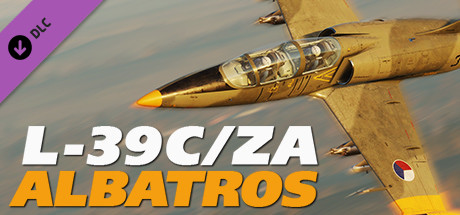DCS: L-39 Albatros - Detailed Information
 Rating
Rating
Based on 55 reviews
| Supported OS | Windows |
|---|---|
| Release Date | 16 October 2015 |
| Developers | Eagle Dynamics SA |
| Publishers | Eagle Dynamics SA |
| Sold copies | ~ 10,000 |
You will be redirected to the official Steam website
About this dlc
Hardware Requirements
Being a trainer aircraft, the L-39C has a tandem cockpit with the student in front and the instructor in the back. The instructor has several controls to mimic system failures to test the student. The L-39C also has two underwing pylons for bombs, rockets and close range air-to-air missiles. For decades, the L-39 was used by nations around the world to train pilots that later went on to fly aircraft like the MiG-29 and Su-27.
A later evolution of the L-39 was the L-39ZA light attack aircraft. The ZA adds two additional weapon pylons and a center pylon to mount a gun pod. The ZA has proved a popular choice for low-intensity conflicts. The L-39ZA will be available later during the Open Beta.
Key features of the DCS: L-39 Albatros:
- Professional Flight Model that accurately mimics the performance and flight characteristics of this legendary trainer
- Highly detailed, six-degrees-of-freedom (6 DOF) cockpit
- Interact with cockpit controls with your mouse
- Fully modelled weapon systems
- Accurate L-39C and L-39ZA models with correct country markings
- Detailed modelling of the L-39 instruments, weapons, engine, radios, fuel, electrical and hydraulic systems
- Fly from either the front seat or back seat
- Cooperative multiplayer in the same aircraft
All rights reserved. (c) 2017 Eagle Dynamics SA.